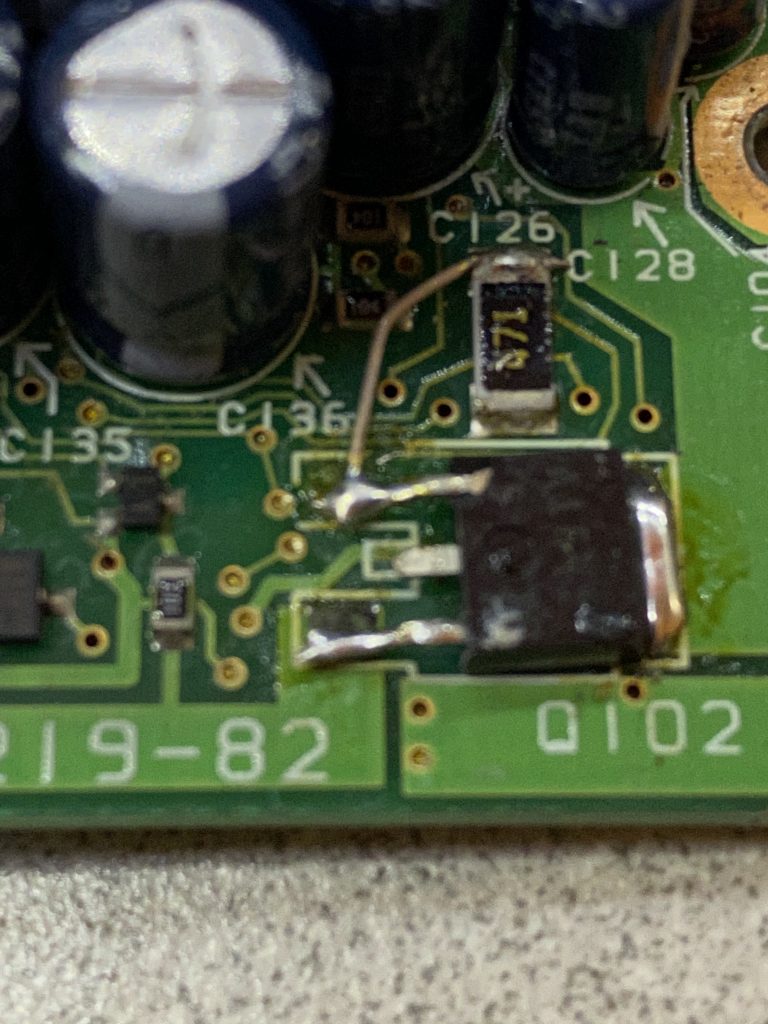
I noticed an old TM-742AD in a friends garage recently. It had been disassembled and had a label on it that read “Defective Unit” – that piqued my interest!
I brought the radio home and put it on the bench. The radio powered up but all of the memories were reset to default frequencies so I suspected the backup battery was dead. I programmed a simplex frequency and transmitted into my service monitor. The PTT switch on the microphone was stuck. I fixed that by replacing the heavy foam bumper inside the microphone. Transmitting again, I noticed there was no TX audio. Since this radio uses an electret microphone, my first question was – is there power to the microphone? I measured 0 volts on the “8C” line to the microphone. Tracing through the schematic, I found a bad fuse. Replacing the fuse restored mic audio.
I disassembled the radio’s controller section which consists of two circuit boards fixed to a metal frame and connected together via a SIP connector and a ribbon cable. I measured the backup battery and found that it was flat. I have replaced many of these batteries in the TM-742 model radios and had brand new ones in stock. I bought direct replacement backup batteries from Mouser. Replacing the battery solved the memory issue.
When turning off the radio, I noticed the sound of a DTMF digit over the speaker and that the speaker was still making a rushing noise when it should be silent.
Power to the audio amplifier is controlled by two transistors, one a high power switching transistor that provides the source voltage for an 8 volt voltage regulator. With the power off, there was still 12.6 volts on the input side of the voltage regulator. I immediately suspected Q102, the larger switching transistor. Testing it confirmed that it was internally shorted which provided power to the audio circuits even when the logic circuits were shut down.
I replaced the 2SA1641(S) with a new one that I had in stock. I’ve seen this switching transistor fail in other units I’ve worked on.
The radio had been worked on before and the trace from the base of the transistor to the collector of the previous stage switching transistor through a current limiting resistor had been replaced with a short length of bare wire.

After I replaced the transistor, I cleaned up the wire that replaced the burned out PCB trace.
Upon further testing, I found that the output audio was intermittent! I installed a plug in the mixed audio output jack to plug into my test amplifier and while inserting the plug, I noticed the audio was restored. So, I reflowed the solder on the 3.5mm stereo mixed audio jack, sprayed contact cleaner into it, and the output audio is back to normal.
This is a really great radio and is still serviceable after 28+ years! Parts are becoming a little more scarce but you can still find these radios and optional modules and accessories on ebay for reasonable prices.
The last problem that I tackled with this TM-742AD was the lack of CTCSS decode, when there was clearly a TSU-7 decoder module installed. There was no CTCSS indication on the screen when pressing the TONE button.
My suspicion that the connector had separated from the board was correct. I reflowed the surface mount connector back onto the TSU-7 board and that was all that was needed to restore CTCSS (PL) decode. This is unfortunately a common problem with these older radios.

Leave a Reply